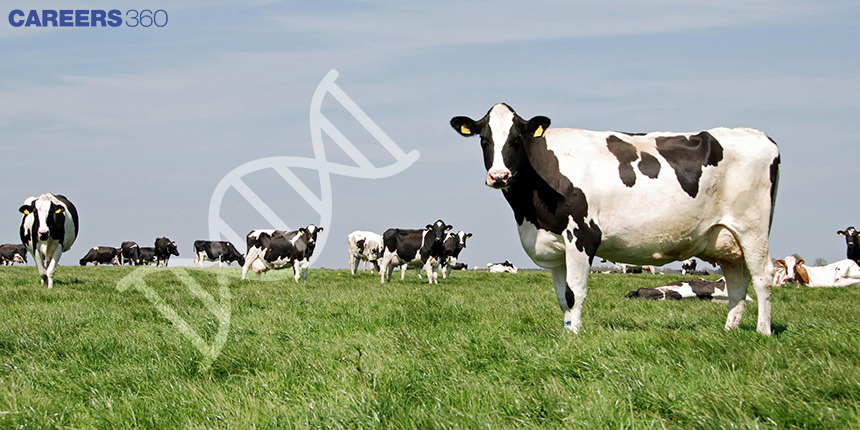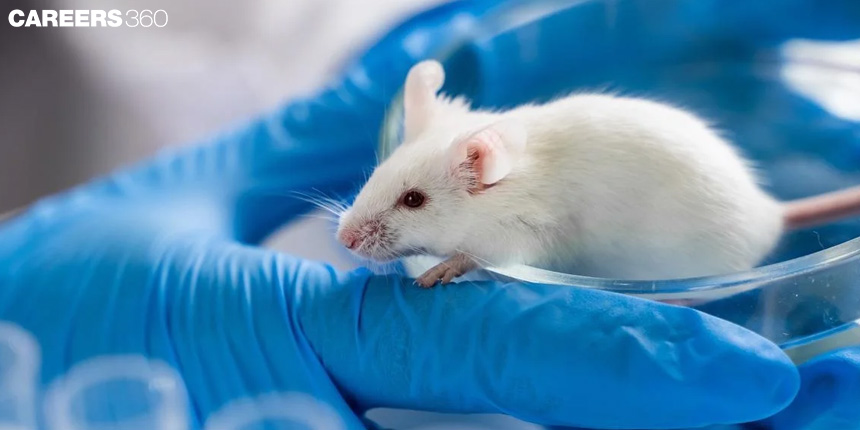How Transgenic Animals Can Help Human Kind
Transgenic animals are those whose DNA has been altered to carry and express an additional (foreign) gene. Over 95 per cent of all transgenic animals in existence are mice, but transgenic rats, rabbits, pigs, sheep, cows, and fish have also been created. Animal transgenesis first occurred in 1980.
This Story also Contains
- Transgenic Organisms VS GMOs
- Purposes Of Producing Transgenic Animals
- Some Transgenic Animals

Transgenic Organisms VS GMOs
Although the terms "transgenic organism" and "genetically modified organism (GMOs)" are frequently used synonymously, they are not always the same. All transgenic organisms are GMOs, but not all GMOs are transgenic. Transgenic organisms are those species whose genetic makeup has been altered by introducing DNA from an unrelated species.
The ever-popular aquarium fish called the GloFish is a fantastic example. A biologist noticed a glowing jellyfish and thought of a "glowing fish. The gene responsible for making the jellyfish glow like a Christmas tree was found. The green fluorescent protein (GFP) gene from a jellyfish that naturally emits bright green bioluminescence was extracted by Dr Zhiyuan Gong and his colleagues at the National University of Singapore in 1999 . This gene was then introduced into the DNA of the zebrafish, and voila there we had a GloFish. So, now we know that transgenesis allows organisms to copy a function from another organism that they did not previously have.
Like transgenic organisms, genetically modified organisms also undergo DNA alterations. But here's the difference: the only DNA involved in GMOs is the DNA of the organism.
What is the purpose of producing these animals? How are humans benefiting from these modifications? Let’s look at a few causes.
Purposes Of Producing Transgenic Animals
Transgenic animals are more widely used for various purposes. These include:
To Study Normal Physiology And Development
Transgenic animals can be specifically designed to enable the study of gene regulation, how it affects the body's development and normal functions, and the study of complex growth factors, for example, insulin-like growth factors. Scientists have produced growth hormones, insulin, and blood clotting factors in transgenic animals. These are obtained from cow's milk and are very beneficial for humans.
Transgenesis appeared to be an essential tool for understanding the rejection mechanisms of transplanted organs as well as a potential method for creating pigs that could be used as human organ donors. Experimental research on rejection mechanisms is done on mice, rats, rabbits, and, less frequently, on pigs themselves. Information is gathered about the factor's biological function in the body by introducing genes from other species that alter the factor's formation and observing the biological effects that follow.
Study Of Disease
To better understand how genes influence the onset of disease, many transgenic animals are created. These were created specifically to act as models for human diseases, enabling the investigation of potential new curative agents. Many human diseases, including cystic fibrosis, rheumatoid arthritis, cancer, and Alzheimer's, have transgenic models available today. Today, transgenic animals are used to treat almost 5,000 genetic disorders.
For instance, scientists from Finland have developed a calf that carries a gene which, in turn, regulates the production of a substance that encourages the growth of red blood cells in people.
Xenotransplantation
Every year, the cause of death for a lot of people around the world is organ failure. Some individuals struggle with their kidneys, while others may have lung issues. Medical science has been working hard to provide a solution to this. Scientists have successfully experimented on pigs to create human organs.
The term "xenotransplantation" refers to any procedure involving the implantation, transplantation, or infusion into a human recipient of (a)tissues, organs, or live cells from a nonhuman animal source, or (b) cells, tissues, human body fluids, or organs that have been in ex vivo contact with live nonhuman animal cells, tissues, or organs.
However, pigs contain a protein that is rejected by the human immune system. To make this protein more readily accepted by the human immune system, scientists are attempting to replace it with the human protein.
Biological Products
Certain human diseases can be treated with medicines that contain biological products, but producing such products is frequently expensive. By introducing the section of DNA (or gene) that codes for a particular product, such as the human protein (α-1-antitrypsin) used to treat emphysema, transgenic animals that produce useful biological products can be produced. Similar efforts are being made to treat cystic fibrosis and phenylketonuria (PKU).
In 1997, the first transgenic cow, Rosie, produced human protein-enriched milk (2.4 gram per litre). The milk was a more nutritionally complete product for human infants than natural cow's milk because it contained human alpha-lactalbumin.
Vaccine Safety
Transgenic mice are used to test the safety of vaccines before they are administered to humans. The safety of the polio vaccine is being tested using transgenic mice. If successful and proven to be trustworthy, they could take the place of using monkeys to test the safety of vaccine batches.
Chemical Safety Testing
This is testing for toxicity and safety. The process is the same as that used to test the toxicity of drugs. Genes are inserted into transgenic animals to increase their sensitivity to toxins compared to non-transgenic animals. After that, they are exposed to the toxins, and the effects of the toxic substances are studied. We can get results faster if we test for toxicity in these animals.
Agricultural Importance
There is much potential importance for transgenesis in agriculture. For example,
- The transgenesis principle can be used to change a variety of phenotypic traits that could raise the value of animals with agricultural importance. Growth rate, fat composition, milk production, and hair texture are a few of these.
- Farmers breed animals selectively so that healthy animals can be obtained with desired traits, such as an increased amount of milk and healthy meat. Results can be obtained in a short time. While traditional breeding is also common, it yields slow results because of the time-consuming method.
- Quality is one of the prime factors for farmers. Transgenic cows have been created that produce milk with higher nutritional value than an ordinary cow.
- Scientists are conducting research to produce disease-resistant animals.
Some Transgenic Animals
Here are examples of transgenic animals.
Dolly Sheep
On July 5, 1996, at the Roslin Institute in Scotland, the first mammal to be cloned from an adult cell was Dolly, a sheep. In this procedure, an unfertilized egg from a Scottish Blackface ewe that had had its nucleus removed was given an injection of udder cells from a six-year-old Finn Dorset white sheep. Electrical pulses caused the cell to fuse. The embryo that was created after the nucleus of the cell fused with the egg was cultured for six to seven days. A second Scottish Blackface ewe was given the implant, and she gave birth to Dolly, the transgenic sheep.
Transgenic Mice

By injecting DNA into female mouse oocytes, or 1-2 celled embryos, transgenic mice are created. The embryo is implanted into the uterus of receptive females after the DNA injection.
By introducing significant chunks of human DNA encoding human immunoglobulin genes and mating these transgenic animals with strains in which the endogenous immunoglobulin loci are mutated, it has been possible to create transgenic mice that express human antibodies, which are better for drug use than murine antibodies.
The applications listed here are related to human health, directly or indirectly.
Applications of animal transgenesis include gaining information on how gene function and regulates, and on human diseases. Recombinant pharmaceutical proteins and xenoorgans for humans that can be used for human therapy are high-value products that were made possible by transgenesis. Animal products have been improved for human consumption.
